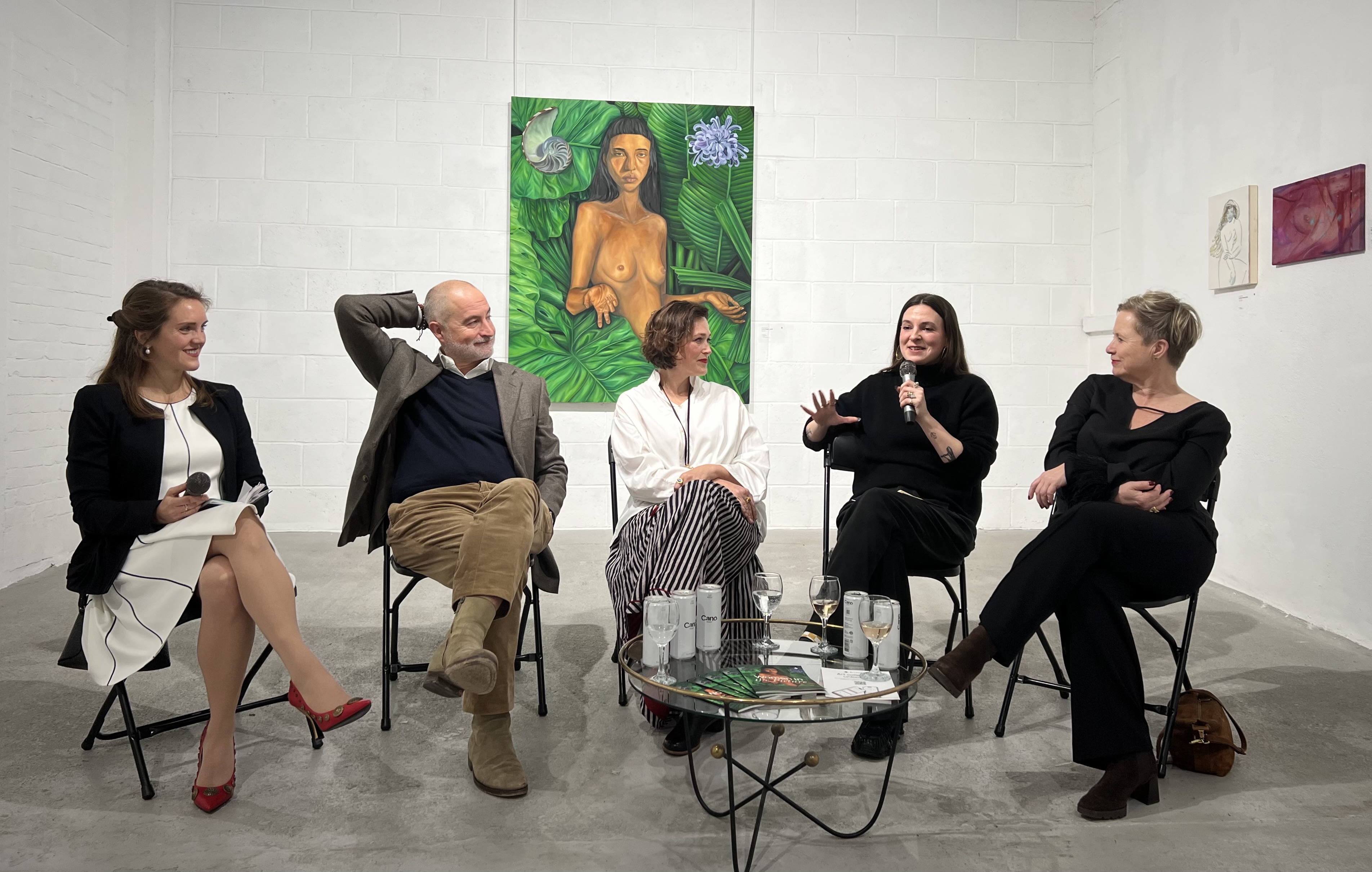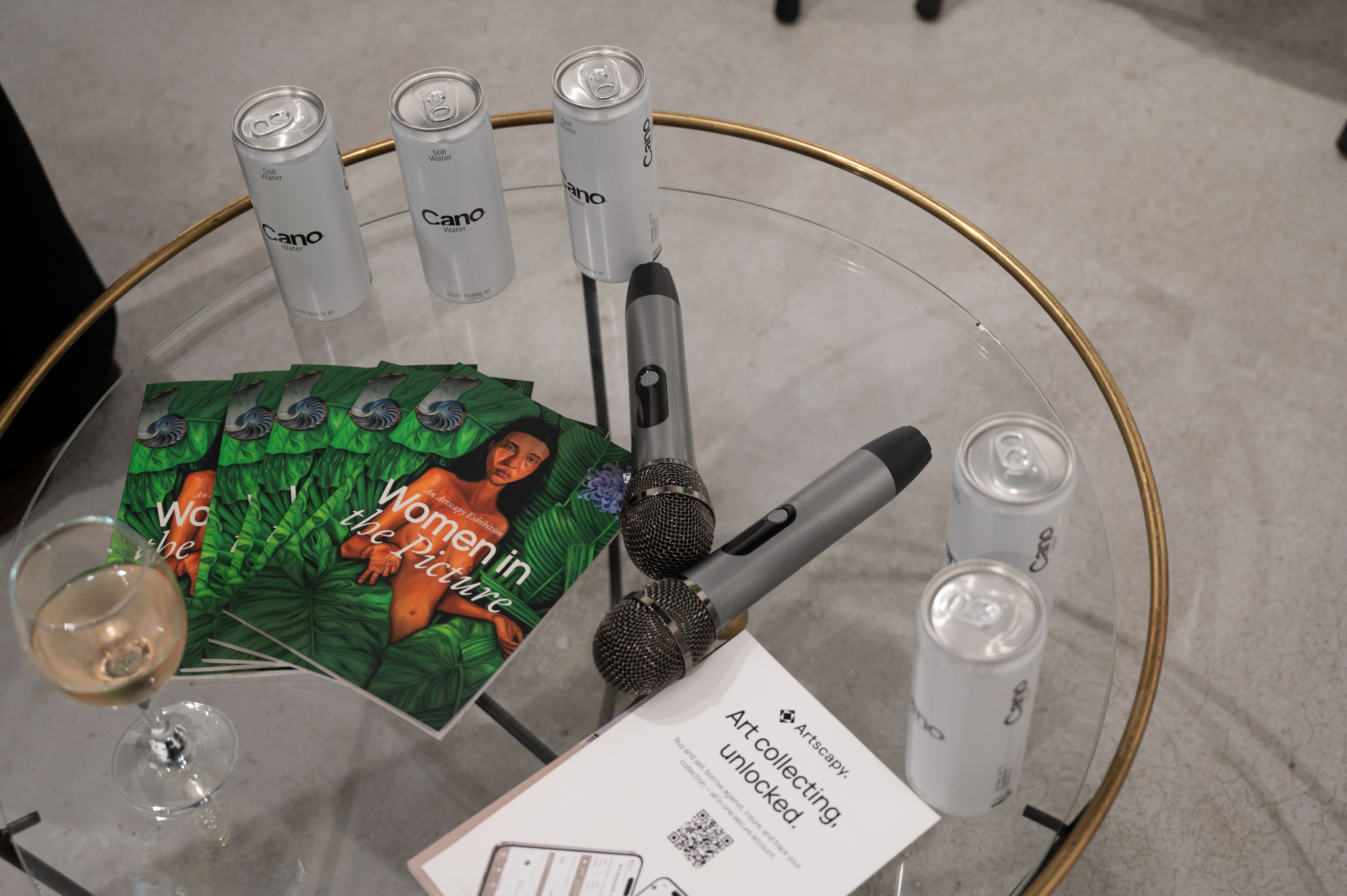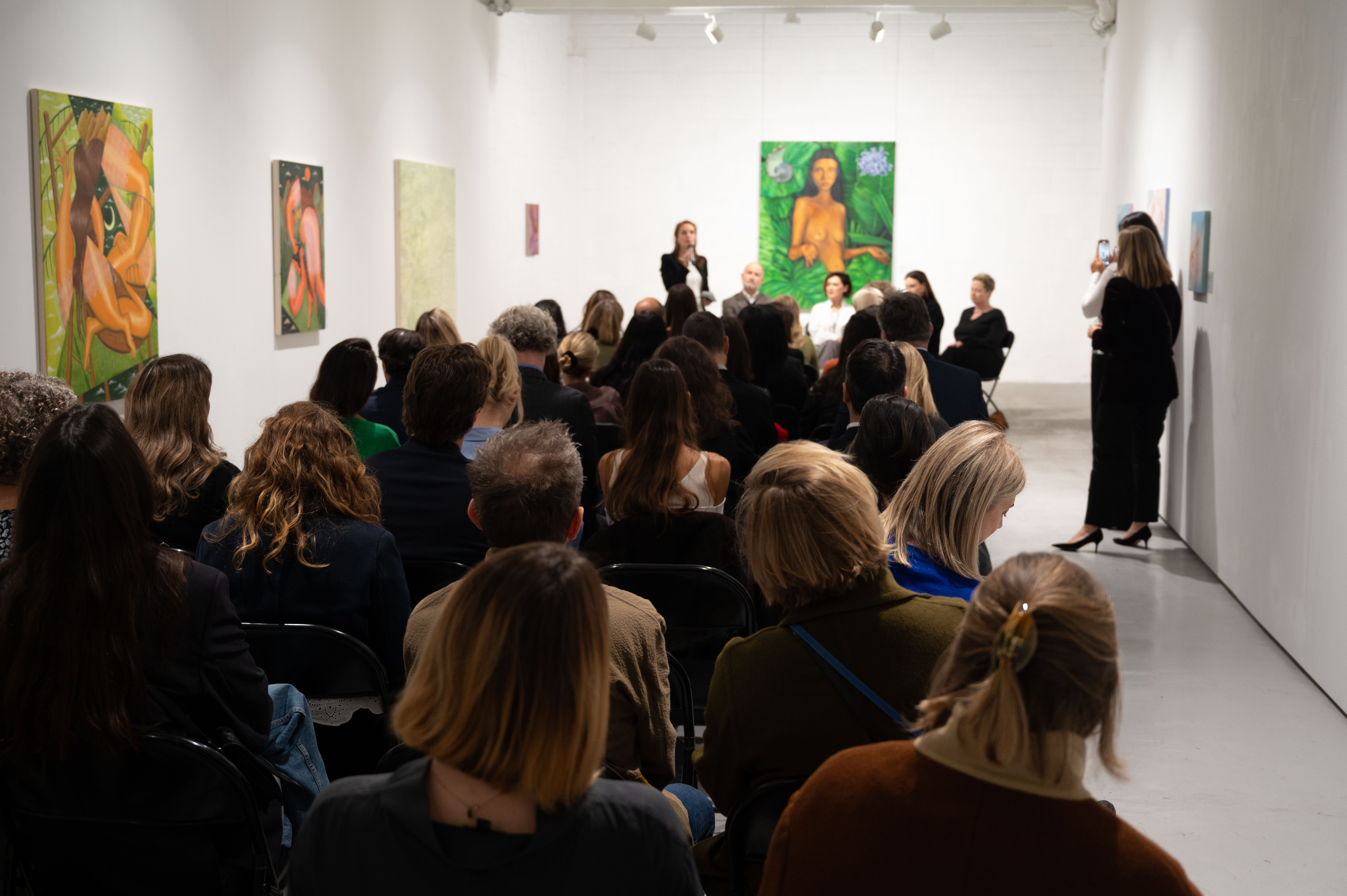Panel talk highlights: Investing in female artists
To celebrate our exhibition, Women in the Picture held in London from the 4th to the 8th of November 2025, we hosted a panel discussion on Investing in Female Artists with Vision, Value and Visibility. This talk explored why investing in female artists is not only a matter of equity but also of opportunity.

Image taken during private view of Women in the Picture. Photo: © Rhea Mathur
The panelists included:
- Sophie Parker - Director of Photo London
- Hettie Judah - Art Critic and Activist
- Christian Levett - Art Collector / Founder of FAMM Museum
- Susan Dunn - Art collector/ Founder of Harbour Litigation Funding
- Emilia De Stasio, Art collector and Co-founder of Artscapy.
With their help, we examined market trends, historical biases, as well as the ways in which collectors and institutions can help shift the narrative.
The intention behind the discussion
The talk began with an introduction by Emilia De Stasio on Artscapy and why this exhibition was the need of the hour. For those of you who were not able to attend, here is her message:
For the first time in history, women artists are being collected almost on par with male artists, and market performance is following suit. Both in terms of spending and collection composition, women artists now reflect a 45% share, and certain segments like African art see an outright 50-50 gender split. Whether by market performance, representation, or collecting trends, there are more women artists than ever before.
Of course, we are not there yet. Though leaps of progress towards gender parity are being made, underrepresentation remains significant. Even at a historical zenith, women artists reflect barely a quarter of auction sales and a third of gallery representation.
With this backdrop, I now want to turn to the topic of today, collecting women artists with vision and value. With me I have an esteemed panel of key industry voices reflecting an excellent mix of perspectives.
Image taken during private view of Women in the Picture. Photo: © Max, YMX events
The main focus of the conversation was on:
VISION: What does 'vision' mean to you in the context of a female artist’s practice, and how do you identify or support that kind of visionary work as a collector, writer, or art fair director?
VALUE: Is undervaluation of women artists mostly bias or structural? If structural, which mechanisms change value fastest or with the greatest impact: museum acquisitions, critical writing, fair curation, or collector commitments?
VISIBILITY: Do you think there is a risk of women artists being over-framed in terms of their gender rather than the intrinsic value of their work? If so, how do we balance both narratives?
Key insights from panelists
Christian Levett
About a decade ago, the Guerrilla Girls drew attention to the bias that most works on Western museum walls were by white men, which triggered a shift in the art market. Museums, dealers, collectors, and auction houses began actively prioritising women artists, and 21st-century sales now feature many young female names. Despite this, since the market is catching up from a very low base, auction records for living women still trail those of men by roughly sevenfold. In short, momentum is real, but the disparity persists.
Against that backdrop, his strategy favours women artists from Impressionism through to mid-career who already have museum presence and auction records; with finite output and rising demand, quality works absorbed into strong collections can tighten supply and compound value over time. He cautions against the roulette of chasing “the next Basquiat,” where hype can outpace fundamentals and leave prices sagging later. And his final rule is simple: buy what moves you and assume you’ll live with it, because loving the work is the most reliable investment of all.
Sophie Parker
Sophie Parker has reshaped Photo London by widening the frame of what photography can be and hard-coding inclusion into the fair’s practice. She tracks representation year over year and holds exhibitors to account—this year, 56% of participants showed women artists, well above an industry norm under 25%. Her team actively reviews applications and isn’t shy about asking galleries to adapt group booths to include women from their own rosters. She’s also retired legacy language, scrapping the “Master of Photography” award to break the reflexive tilt toward a male canon. The aim is a fair that both reflects and shapes the market, normalising discovery of women photographers alongside established names: “Until everyday people who aren’t even in the art world are talking about women artists as much as they recognize men’s names, I don’t think we can say we’ve done enough.”

Image taken during private view of Women in the Picture. Photo: © Bethan Street
Susan Dunn
As an avid collector, Dunn’s key reflections had great pointers for young collectors:
- Art before the artist; Dunn urges people to notice what moves them and why.
- Keeps what she buys: collecting is about supporting artists, not flipping.
- “Pays it forward”: makes introductions and opens doors to residencies, projects, and suitable galleries.
- Finds artists’ imaginative worlds more compelling than spreadsheets (coming from law/finance), she values relationships around the work.
- Emphasises successful artists mentoring others via incubators and legacies. Notes that many artists need help with pricing, exposure, and navigation.
- Argues that building networks and sharing hard-won lessons is essential alongside what collectors and fairs do.

Image taken during private view of Women in the Picture. Photo: © Max, YMX events
Hettie Judah
Judah had practical pointers for collectors, curators, and cultural institutions:
- Embrace non-linear careers: pauses for caregiving, illness, or life events can be generative, with rich work emerging later.
- Look beyond “asset class” thinking: artists are humans, not yield curves; value can’t be reduced to tick-boxes.
- Lean into discomfort: when a work unsettles you or defies easy response, it may signal real innovation.
- Mind the history: generations of women were blocked from opportunities; reassessment and support are overdue.
- Watch the silences: be vigilant about who isn’t being platformed and which topics get censored or sidelined.
- Back practical support: childcare bursaries, residencies, and flexible structures help close structural gaps.
Our take-away
As the conversation made clear, progress isn’t automatic- it’s the result of intentional choices by collectors, curators, fairs, and institutions. Champion the work first, measure who gets shown, fund the structures that make careers possible, and keep widening the frame so more artists can be seen on their own terms. If we buy what we love, support what we value, and hold ourselves accountable with data and action, the market will follow. That is the promise of Women in the Picture: a fairer canon, richer collections, and a culture that finally reflects the breadth of talent already in front of us.
Thank you to everyone who joined us! If you would like to attend our future events, become an Artscapy member.

Image taken during private view of Women in the Picture. Photo: © Max, YMX events
The exhibition opens with a week of invitation-only events:
Tuesday 4 November — VIP Private View
Wednesday 5 November — Panel Talk
Saturday 8 November — Closing Breakfast with Investors and Collectors
Please RSVP to express your interest.











